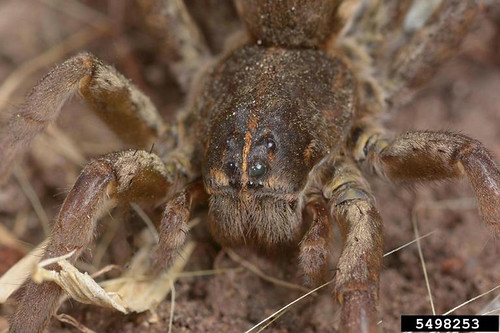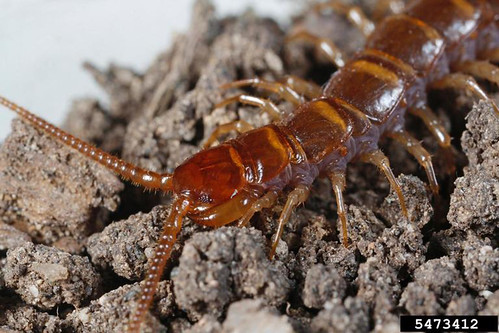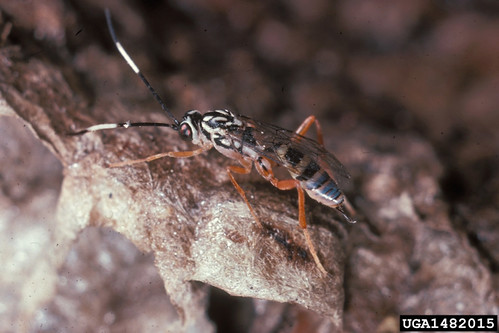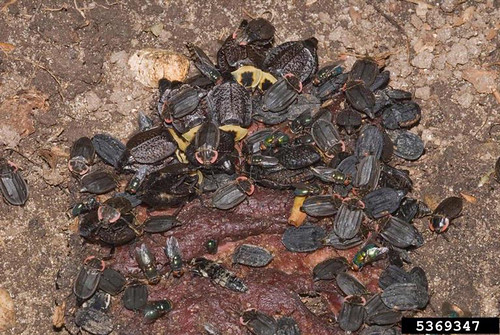
They squirm, crawl, scurry and swarm … and they’re all around us.
More than 900,000 species of insects and arachnids are found around the world, and some people would rather not come into contact with even one of the often misunderstood critters.
The fear for me came when I was 7 years old during the summer of 1990.
Mom worked the third-shift, so one night dad decided a night at the drive-in theater with his six kids would be the better than us destroying the house. The movie? Jeff Daniels and John Goodman in “Arachnophobia.”
The premise of the now classic comedy-horror movie is simple: poisonous spiders wreak havoc on a small town leaving a trail of dead townsfolk in their wake. The movie did not win any Academy Awards … but it should have: Best Comedy-Horror Movie for Instilling Irrational Fear of Arachnids in Second-graders.
I still haven’t forgiven dad.
So with the scary Halloween season upon us, I decided to talk to one of the U.S. Forest Service’s entomologists to get a better idea how these creepy crawlers benefit our environment and why I shouldn’t scream like a 5–year old when an eight-legged web-slinger crosses my path.

“Insects play a very important role in our forests,” said Robert J. Rabaglia, acting deputy director, Forest Health Protection. “Many are important sources of food for other animals and are important in the food web. In our streams, ponds and lakes, aquatic insects are important food for fish and eat vegetation that would otherwise grow uncontrolled. Insects that feed on trees also are important to the health of the forest. Not only do they serve as food for birds, reptiles and mammals but are important recyclers of nutrients in the forests.”
But this newfound knowledge doesn’t change the fact that they’re still creepy. Which ones really make the skin crawl?
“Creepy may be in the eye of the beholder, but many people are creeped out by roaches, spiders, centipedes and scorpions,” Rabaglia said. “Stink bugs are quickly becoming a creepy insect.”
Fear by humans is the least of the problems. As good as insects are some can be devastating to forest when they run amok.
“Some of the insects we consider most damaging, such as defoliators like budworms and gypsy moth or bark beetles, are important parts of a healthy forest,” said Rabaglia. “It’s only when populations of these insects are at damaging levels that we need to control them.”
This is where spiders become an essential part of many eco-systems because they are a predator of insects and help keep populations regulated.
It is true, though, that some bugs are more dangerous than they look.

“The most notorious poisonous insects are wasps, bees and ants, but other groups also have poisonous species,” said Rabaglia. “There are some caterpillars that have poisonous spines and some true bugs, such as the assassin bug, that have venomous bites.”
While most people like me don’t like bugs, not as many have true phobias such as arachnophobia, a fear of arachnids, and entomophobia, a fear of insects. So after speaking to one entomologist, I still wasn’t convinced that their benefits outweighed their creepiness. I went for a second opinion.
“It is unfair to ask an entomologist if insects are creepy, but I guess there are some insects out there that cause some to squirm,” said Michael Bohne, forest group health leader. “Carrion, or burying beetles, feed on dead birds and animals. They lay eggs under carcasses, which hatch into wormy larvae that feed on the dead animals. Forensic specialists also use these beetles to help establish the time of death when a human corpse is found outside.”
None of this made me feel any better. But Bohne pointed out more reasons insects and arachnids are crucial to our forests.
“Even vampire-like mosquitoes serve an important role in our environment,” Bohne said. “Mosquito larvae are a food source for many aquatic organisms.”
Then the entomologist, who seemed to be having a little too much fun with this interview, even likened a Forest Service initiative to control the devastating ash borer beetle to another horror movie classic.
“Recently, forest entomologists from around the country have been using a native parasitoid wasp to monitor for the exotic emerald ash borer, a system called biosurveillance,” Bohne said. “The wasp works a lot like the xenomorph from the movie “Alien.” The female wasp stuns, collects, and buries the emerald ash borers in underground egg chambers. The wasp larvae emerge from the eggs and eat the stunned beetles alive and complete development. I don’t think the beetles scream, but in the ground nobody can hear them scream.”
All joking aside, Bohne added that “insects are important bio-indicators of strong, healthy forests. A healthy forest will have a large, diverse population of insects.”
Writing this has not cured my irrational fear of spiders. But the next time I get hit in the face with a web while walking, I’ll try not to smack at my face like it is on fire. Instead, I’ll thank little Charlotte for all she does for our forests.

